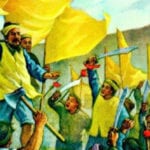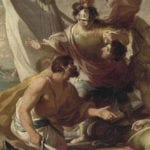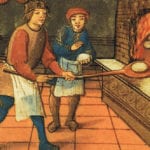 Weird Stuff
Weird Stuff  Weird Stuff
Weird Stuff  Animals
Animals 10 Inspiring Tales of Horses Being Human
 Mysteries
Mysteries Top 10 Haunting Facts About the Ghost Ship MV Alta
 History
History 10 Surprising Stories About the Texas Rangers
 Humans
Humans 10 Philosophers Who Were Driven Mad by Their Own Theories
 Miscellaneous
Miscellaneous 10 Video-Game-Worthy Weapons and Armors from History
 Weird Stuff
Weird Stuff 10 Psychics Who Accurately Predicted Wartime Events
 The Arts
The Arts 10 Pieces of Art Inspired by a Broken Heart
 Health
Health 10 Science Fiction-Sounding New Medical Treatments
 History
History 10 Surprising Facts About the Father of Submarine Warfare
 Weird Stuff
Weird Stuff 10 Times Real Laws Were Based on Bizarre Hypotheticals
 Animals
Animals 10 Inspiring Tales of Horses Being Human
 Mysteries
Mysteries Top 10 Haunting Facts About the Ghost Ship MV Alta
Who's Behind Listverse?

Jamie Frater
Head Editor
Jamie founded Listverse due to an insatiable desire to share fascinating, obscure, and bizarre facts. He has been a guest speaker on numerous national radio and television stations and is a five time published author.
More About Us History
History 10 Surprising Stories About the Texas Rangers
 Humans
Humans 10 Philosophers Who Were Driven Mad by Their Own Theories
 Miscellaneous
Miscellaneous 10 Video-Game-Worthy Weapons and Armors from History
 Weird Stuff
Weird Stuff 10 Psychics Who Accurately Predicted Wartime Events
 The Arts
The Arts 10 Pieces of Art Inspired by a Broken Heart
 Health
Health 10 Science Fiction-Sounding New Medical Treatments
 History
History 10 Surprising Facts About the Father of Submarine Warfare
10 Misconceptions About The Wars Of History
As it turns out, “the fog of war” applies not just to those who participate in a conflict, but to those who remember it. Even among well-known wars, much of what remains in the public consciousness is clouded by myth and invention.
10The “Join, Or Die” Snake
American Revolution
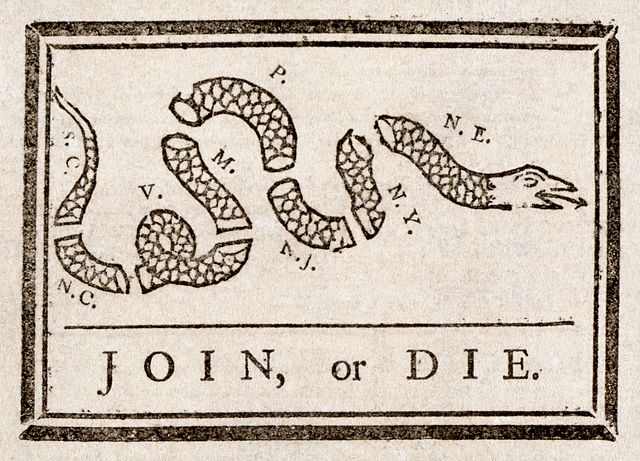 The Misconception: The iconic “Join, or Die” cartoon depicts the American coastline in the form of a snake cut into segments representing the colonies’ disunity. It’s a clear-cut message, warning “pull together or we’ll never get rid of our British overlords.”
The Misconception: The iconic “Join, or Die” cartoon depicts the American coastline in the form of a snake cut into segments representing the colonies’ disunity. It’s a clear-cut message, warning “pull together or we’ll never get rid of our British overlords.”
But Really: The political cartoon was created to unite the fractious colonies—against the French. In 1754, 20 years before the colonies formed a union to defeat the British, Benjamin Franklin called for a similar union to curb French expansion in the American interior.
Plans for a united effort against New France failed miserably. Most of the colonies felt a stronger tie to Britain than to one another. The British weren’t keen on such a union either, partly because the colonies resembled squabbling schoolchildren, but mostly because of the dangerous precedent it might set. Instead, the British decided on an expensive large-scale military operation to check the French. Of course, when the colonies received the bill for the Seven Years’ War, a union of American interests against the British started to look increasingly appealing.
Confusion over the snake cartoon’s origin likely stems from Paul Revere, who re-purposed Ben Franklin’s idea for his newspaper’s masthead in 1774.
9Saratoga: A Purely Colonial Victory
American Revolution
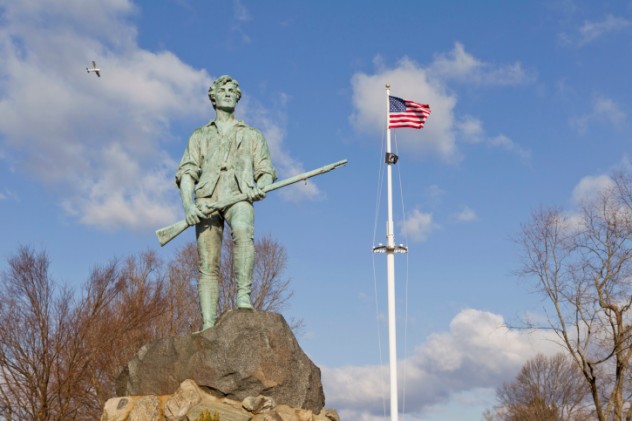 The Misconception: The story of Saratoga is simple: The plucky colonial forces won their first substantial victory over the British, proving the rebels’ mettle and thus prompting an outpouring of French assistance.
The Misconception: The story of Saratoga is simple: The plucky colonial forces won their first substantial victory over the British, proving the rebels’ mettle and thus prompting an outpouring of French assistance.
But Really: The colonists defeated the British at Saratoga with French gunpowder, arms, and supplies—something which is too often ignored. Also ignored are the French and Spanish agents who were on the ground in America long before Saratoga. Centuries before the first “special advisors” set foot in Vietnam and Nicaragua, the fledgling USA was studying Foreign Intervention 101 with two countries anxious to check British power.
The first French reports to come out of the colonies appraising the rebels’ martial capabilities were wildly exaggerated—inflating not just the number of men under arms, but also the rebellious spirit of the local populace. Encouraged, France’s government began a policy of profligate spending to finance the young rebellion. Spain was even more anxious to utilize the colonial insurgency to strike at England. Before the Declaration of Independence was even signed, Spain was pumping money and weapons into the colonies, while engaging the British in South America and Portugal. The revolution’s origins were profoundly American, but they were crucially nurtured by agents of both Spain and France.
When war commenced, it was only the swift intervention of the Spanish and French which kept the colonists’ guns loaded and firing for the two-and-a-half years prior to Saratoga. The victory at Saratoga, just like the colonies’ triumph in the war at large, was only possible as a cooperative effort.
8The People’s Revolution
French Revolution
 The Misconception: Twentieth-century Marxist histories and mistaken conflation with the June Rebellion of 1832, made famous by the musical street urchins of Les Miserables, likely popularized the notion that the “people” initiated the French Revolution.
The Misconception: Twentieth-century Marxist histories and mistaken conflation with the June Rebellion of 1832, made famous by the musical street urchins of Les Miserables, likely popularized the notion that the “people” initiated the French Revolution.
But Really: The French Revolution didn’t begin in the streets of Paris. It began when the French aristocracy forced Louis XVI to convene the Estates-General for the first time in nearly 200 years. Following the American Revolution, France’s fiscal situation was dire. The French financed the war effort through loans, but the pool of willing and available lenders was dry, and now the country faced a serious debt crisis.
In 1787, in pursuit of financial reform, the King’s administration assembled the nobility to consult on new taxes. Various proposals, namely direct taxes, were met with increasing disapproval. The nobility possessed a number of grievances, but pushed for an assembly of the Estates-General on the grounds it was the only body invested with the ability to vote on taxation. There may have something about the rights of man, citizenship, and all that—but mainly taxes. At an impasse and with his treasury empty, Louis XVI had little choice but to schedule the meeting of the Estates-General for May 1789.
So, while it was the Third Estate (everyone who wasn’t nobility or clergy) who carried out the transformational revolution—liberte, egalite, fraternite!—it was actually the titled nobility who initiated the destruction of the ancien regime.
7The Battle Of New Orleans
War Of 1812
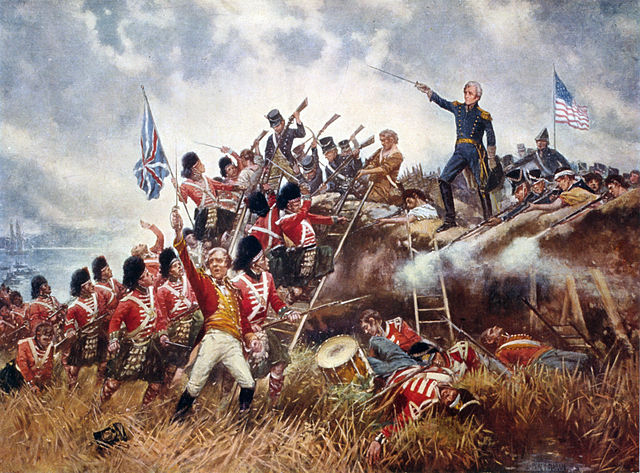 The Misconception: In a rare break from the War of 1812’s norm, US forces absolutely devastated the British at the Battle of New Orleans. However, the victory was only symbolic and indicative of the poor state of early 19th-century communication because, as any trivia buff will tell you, the battle was fought after the war’s conclusion.
The Misconception: In a rare break from the War of 1812’s norm, US forces absolutely devastated the British at the Battle of New Orleans. However, the victory was only symbolic and indicative of the poor state of early 19th-century communication because, as any trivia buff will tell you, the battle was fought after the war’s conclusion.
But Really: The Treaty of Ghent, which eventually ended the War of 1812, states in its first article that until both sides ratified the treaty’s terms, fighting would continue. If either the US or Britain failed to accept the treaty, all bets were off and debate would continue on the battlefield. Even though the British had accepted the treaty when the battle was fought, the United States was still over a month away from ratification.
And while Congress deliberated, the fate of the crucial Gulf Coast city hung in the balance. Far from being meaningless or being merely symbolic, New Orleans was one of a series of battles fought for control of the valuable Gulf Coast region near the war’s end. A loss in New Orleans or Mobile could have meant cessation of a port, which would have had lasting consequences in the contest for supremacy in the Gulf of Mexico. Subsequent battles were fought at Mobile until the US accepted the treaty in mid-February. Fighting actually did continue after the war’s official end on February 16, 1815, but only at isolated frontier outposts, not at New Orleans.
6Slaves Fought For The Confederacy
American Civil War
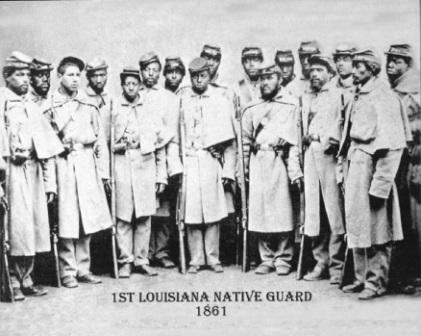 The Misconception: The black Confederate soldier is often used as proof that, “Hey, Southern slavery wasn’t so bad. And if the Civil War was about preserving a racist institution, why would African-Americans fight for the Confederacy?” After all, thousands of black fighting men couldn’t have been wrong.
The Misconception: The black Confederate soldier is often used as proof that, “Hey, Southern slavery wasn’t so bad. And if the Civil War was about preserving a racist institution, why would African-Americans fight for the Confederacy?” After all, thousands of black fighting men couldn’t have been wrong.
But Really: Those thousands of fighting men never existed. Black people served in the Confederate Army, but they did so as cooks, transporters, laborers, and servants. The three black regiments which were actually formed in the South were used as fodder for newspaper photos like the one above, roundly shunned from actual service, and never saw combat. One of those regiments, the 1st Louisiana Native Guards, surrendered to and (in part) later joined the Union.
Certainly, there were exceptional circumstances under which a black man might have been thrust into soldierly duties, but the Confederacy’s own laws prohibited black people from bearing arms or enlisting as soldiers. Just weeks before the war’s conclusion, a narrow vote in the Confederate Congress decided in favor of enlisting black people as soldiers. However, the war ended before any significant recruitment occurred.
Evidence for any widespread African-American combat service in the CSA is near non-existent. Of over 200,000 Confederate POWs taken by Union forces, none were black. Photos of black Confederates have been proven to be forgeries. Other photographic evidence of black people in CSA uniforms or attending Confederate reunions is often presented without context regarding their backgrounds or service record.
5‘Lions Led By Donkeys’
World War I
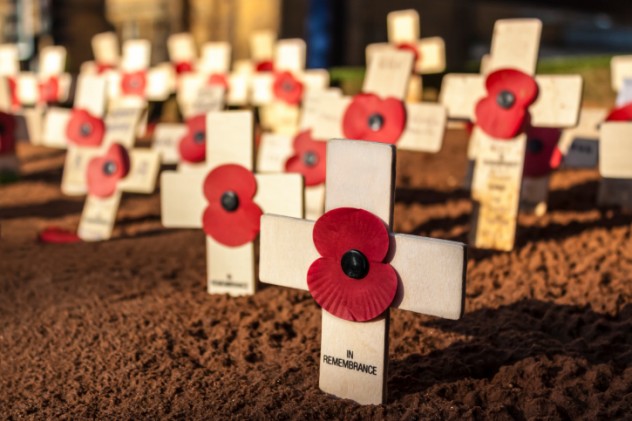 The Misconception: Supposedly, upon watching a gallant but ultimately vain British charge, a German officer remarked that, “The English soldiers fight like lions.” A compatriot aptly replied, “True. But don’t we know that they are lions led by donkeys.” Brave soldiers undone by inept leadership—a succinct summary of the British war effort.
The Misconception: Supposedly, upon watching a gallant but ultimately vain British charge, a German officer remarked that, “The English soldiers fight like lions.” A compatriot aptly replied, “True. But don’t we know that they are lions led by donkeys.” Brave soldiers undone by inept leadership—a succinct summary of the British war effort.
But Really: There are two parts to this myth. First, that the exchange between German officers actually occurred and originated the phrase. And second, that the exchange accurately described the British war effort. As for the phrase itself, it was a well-worn cliché used to describe an array of armies from the Napoleonic era onward. Clearly, the German officers didn’t originate the expression. The British author of The Donkeys, which popularized the updated usage, argued otherwise. Of course, he never was able to produce a source for the supposed conversation.
So, how accurately does rehashed century-old rhetoric describe the British army and its command in World War I? To the extent that all ordered slaughter is senseless, the expression is appropriate. But it’s unfair to the extent that the British, who won the war, were more than just less-dumb than their German counterparts. How do you quickly exploit a breakthrough in enemy lines in 1915? Horses were undone by trenches and barbed wire, tanks were still prototypes, and accurate artillery was still art rather than science. That was the problem faced by British commanders, who are often portrayed as inflexible fools. But learning to use what were essentially new inventions while your country’s fate hangs in the balance is no easy task .
Even without the perfect vision lent by hindsight, British commanders proved adaptable. The British won by integrating accurate aerial and land bombardments with mechanized assaults supported by light infantry. Their generals were perhaps not brilliant, but far from being mere donkeys.
4Nothing But Trenches And Defense
World War I
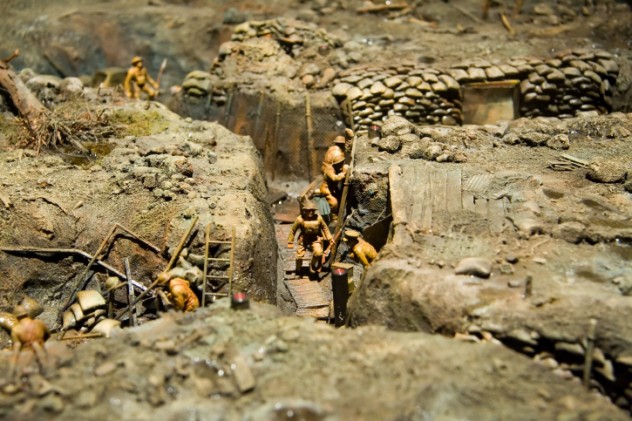 The Misconception: Think about World War I. The first thing to spring to mind is probably imagery of the Western Front, a Stygian landscape riven with trenches and pockmarked by artillery craters. Those unmoving, impenetrable lines defined the war.
The Misconception: Think about World War I. The first thing to spring to mind is probably imagery of the Western Front, a Stygian landscape riven with trenches and pockmarked by artillery craters. Those unmoving, impenetrable lines defined the war.
But Really: A grinding defensive war of attrition and “no man’s land” are only half the story. On the equally bloody Eastern Front, World War I was a completely different fight. The war between Germany, Austria-Hungary, and Russia was brutal, mobile, and highly tactical. Due to the massive geographical scale, over four times larger than the Western Front, the war never bogged down for long.
The Eastern Front resembled a gory game of rock-paper-scissors. The Russians possessed numbers (over 10 million troops), but not technology. The Germans had superior firearms and leadership, but lacked numbers. And the Austro-Hungarians, well, they lacked both technology and numbers, but did boast a superior officer corps—of which three-quarters were actually German. As a result, commanders in the east were constantly jockeying to protect their weaknesses along a fluid 1,800 mile-long front. The war in the east was so markedly different from the one in the west that even cavalry found success charging and running down infantry.
And the Eastern Front wasn’t the only World War I battlefield that saw a conflict radically different from the trench warfare of the Western Front. In Africa and the Middle East, wide-ranging guerrilla actions were fought during the East African Campaign and Arab Revolt, the latter made famous in the movie Lawrence of Arabia.
3Polish Cavalry Charged German Tanks
World War II
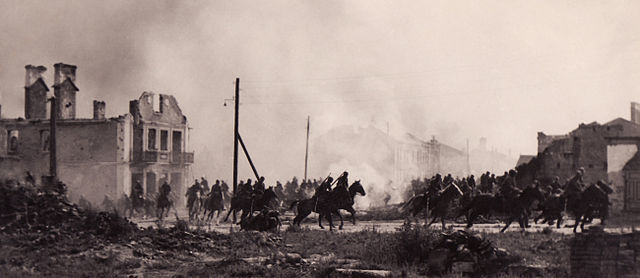 The Misconception: At the outbreak of hostilities with Germany, Polish cavalry with no modern alternatives charged a German tank division, attacking the Panzers with swords and lances. Naturally, the ignorant but noble effort failed miserably.
The Misconception: At the outbreak of hostilities with Germany, Polish cavalry with no modern alternatives charged a German tank division, attacking the Panzers with swords and lances. Naturally, the ignorant but noble effort failed miserably.
But Really: The Nazi propaganda machine invented the story almost out of whole cloth and faked the film evidence to boot. We say “almost” because in 1939 Polish cavalry did charge elements of the German army. During a small battle near the town of Krojanty, Polish lancers charged a group of German infantry caught out in the open and forced them to retreat. A counterattack by two German armored cars repulsed the Poles, who escaped to cover.
While the Polish army was not able to keep pace with the mechanization of the Germany army, the Poles countered German armor by supplying every cavalry regiment with several of the most effective anti-tank guns of the time. These weapons were part of Polish military doctrine and training well before World War II began.
The Poles retained a mounted cavalry element for reasons beyond the country’s lack of economic wherewithal. For one, not two decades earlier, Poland had used its cavalry arm to good effect in defeating the largely machine gun-less Red Army in the Polish-Soviet war. And in the absence of armor or motors, horses remained the next best thing to ensure mobility throughout much of the Second World War.
2The Blitzkrieg Strategy
World War II
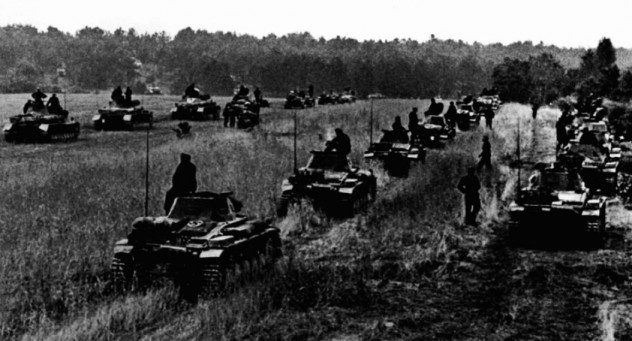 The Misconception: The Germans savaged the Allies in the opening moves of World War II, because they invented a whole new advance in warfare: lightning fast mechanized assaults—the Blitzkrieg.
The Misconception: The Germans savaged the Allies in the opening moves of World War II, because they invented a whole new advance in warfare: lightning fast mechanized assaults—the Blitzkrieg.
But Really: After the Germans handled Poland, drove right through France, and kicked the British across the English channel, the Allies attributed their losses to the Germans’ new Blitzkrieg strategy…which the Allies invented for the German army. But Hitler was nearly as surprised by the speedy German conquest. Upon learning of swift German victories in France, Hitler declared it, “a miracle, an absolute miracle!” The German victory was so complete that Hitler suspected some sort of nefarious Allied trap or counterattack. Of course, none was forthcoming.
But far from being a carefully thought-out strategy, Germany’s opening moves in World War II were haphazard and hurried. In Poland, France, Norway, and Denmark, Germany was improvising as it went along. After their initial success, it made sense for Germany to embrace the doctrine of Blitzkrieg, even if it was of the conquered’s invention. As bad as Germany’s pre-war intelligence was, France’s was even worse. Rather than chalk their defeat up to being caught unawares or command paralysis, it was far easier to explain it away as a result of a hitherto unseen type of warfare. And thus Blitzkrieg was born.
1White Man’s War, Black Man’s Fight
Vietnam War
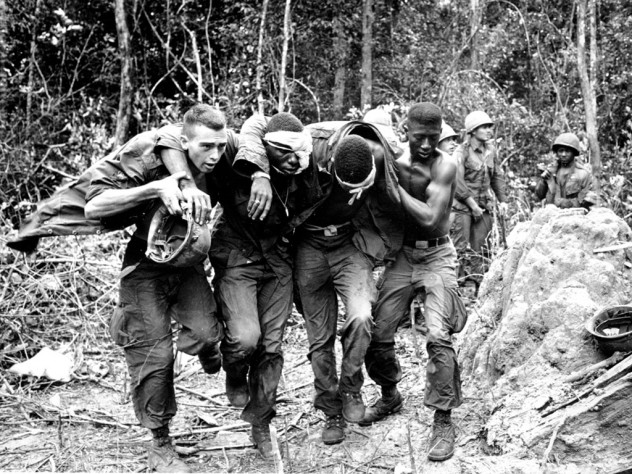 The Misconception: The Vietnam War saw a US army completely divorced from the population it fought to serve. The most marginalized of Americans, young black males, died in numbers out of line with the proportion of black males in American society at-large.
The Misconception: The Vietnam War saw a US army completely divorced from the population it fought to serve. The most marginalized of Americans, young black males, died in numbers out of line with the proportion of black males in American society at-large.
But Really: Yes and no. The Vietnam War was every man’s fight…assuming that “every man” was poor and not attending college. While black soldiers suffered a disproportionate number of casualties in the early stages of the war, the final statistics paint a more nuanced picture.
Of the 58,193 total US casualties in Vietnam, approximately 12.5 percent were black and 86 percent were white. Those figures roughly correspond to United States demography during the Vietnam War. And, despite notions to the contrary, about two-thirds of US service members actually volunteered to serve during the Vietnam War. During World War II, it was just the opposite—about two-thirds of the US forces were drafted.
Certainly, numbers don’t tell the whole story. Young men were coerced into service, a dearth of employment opportunities compelled young men of all races to enlist, and draftees were encouraged to enlist in order to have more control over jobs once in the army. But on the whole, while not necessarily representative of the population at home, the army that fought in Vietnam was more egalitarian and more educated than those which preceded it.
